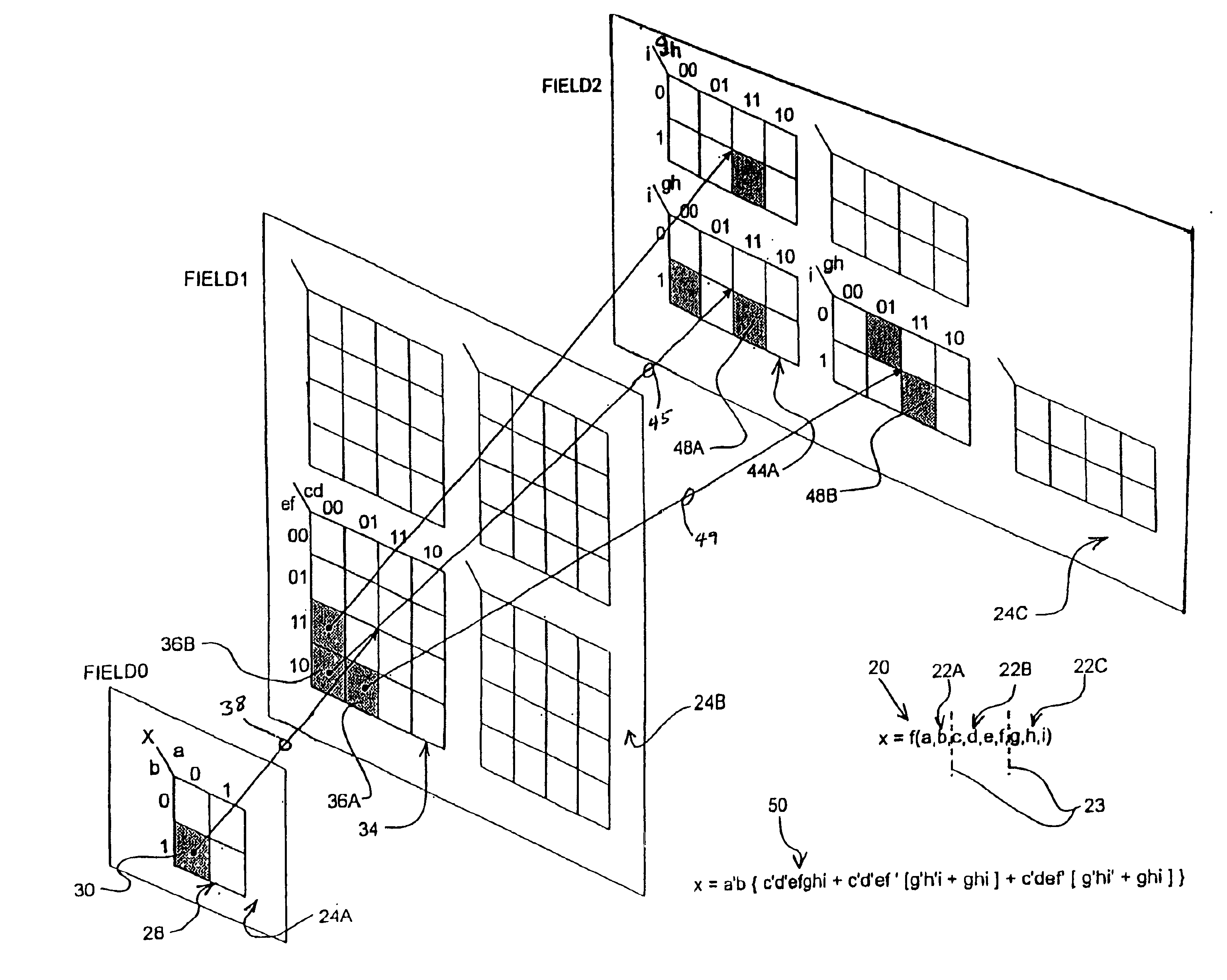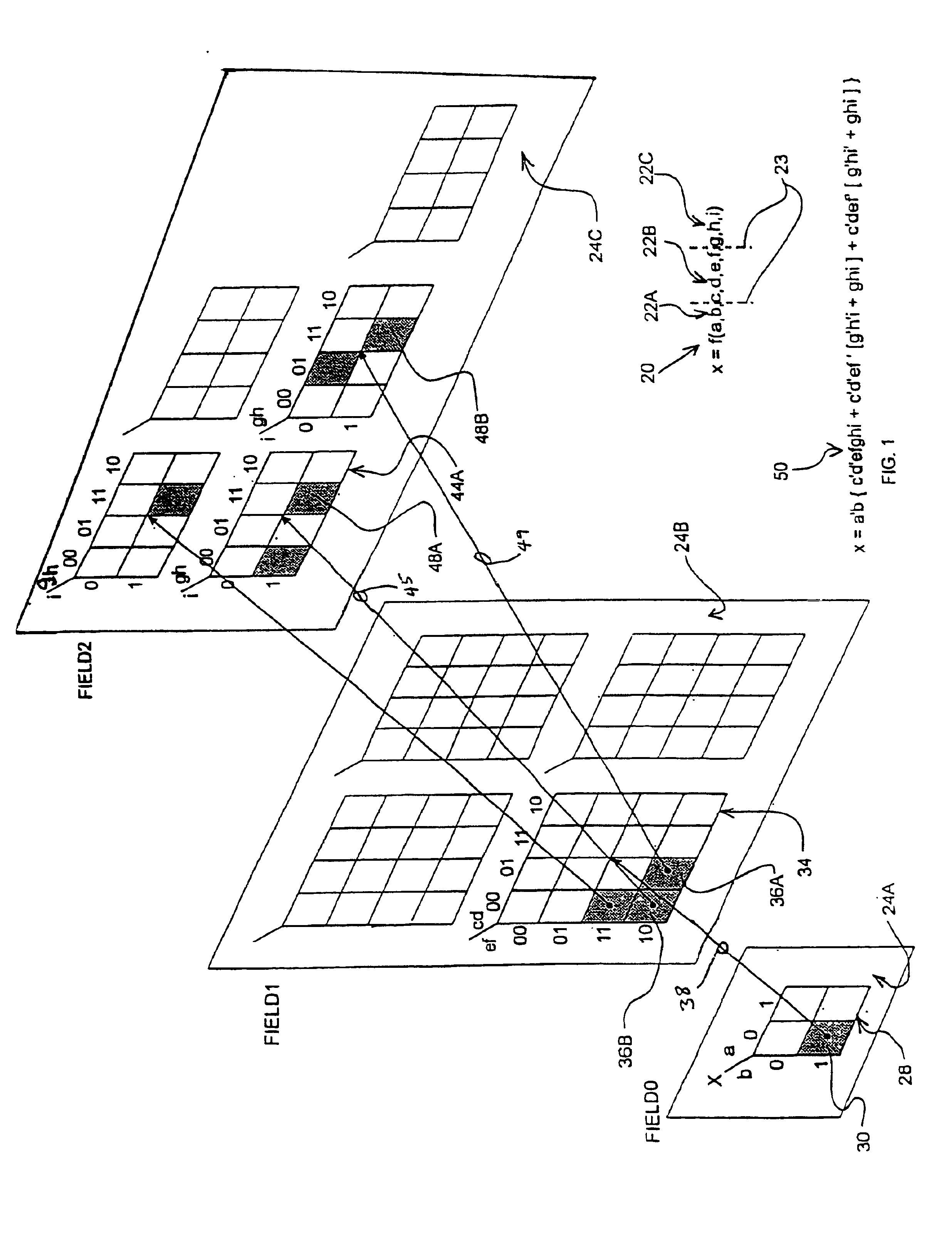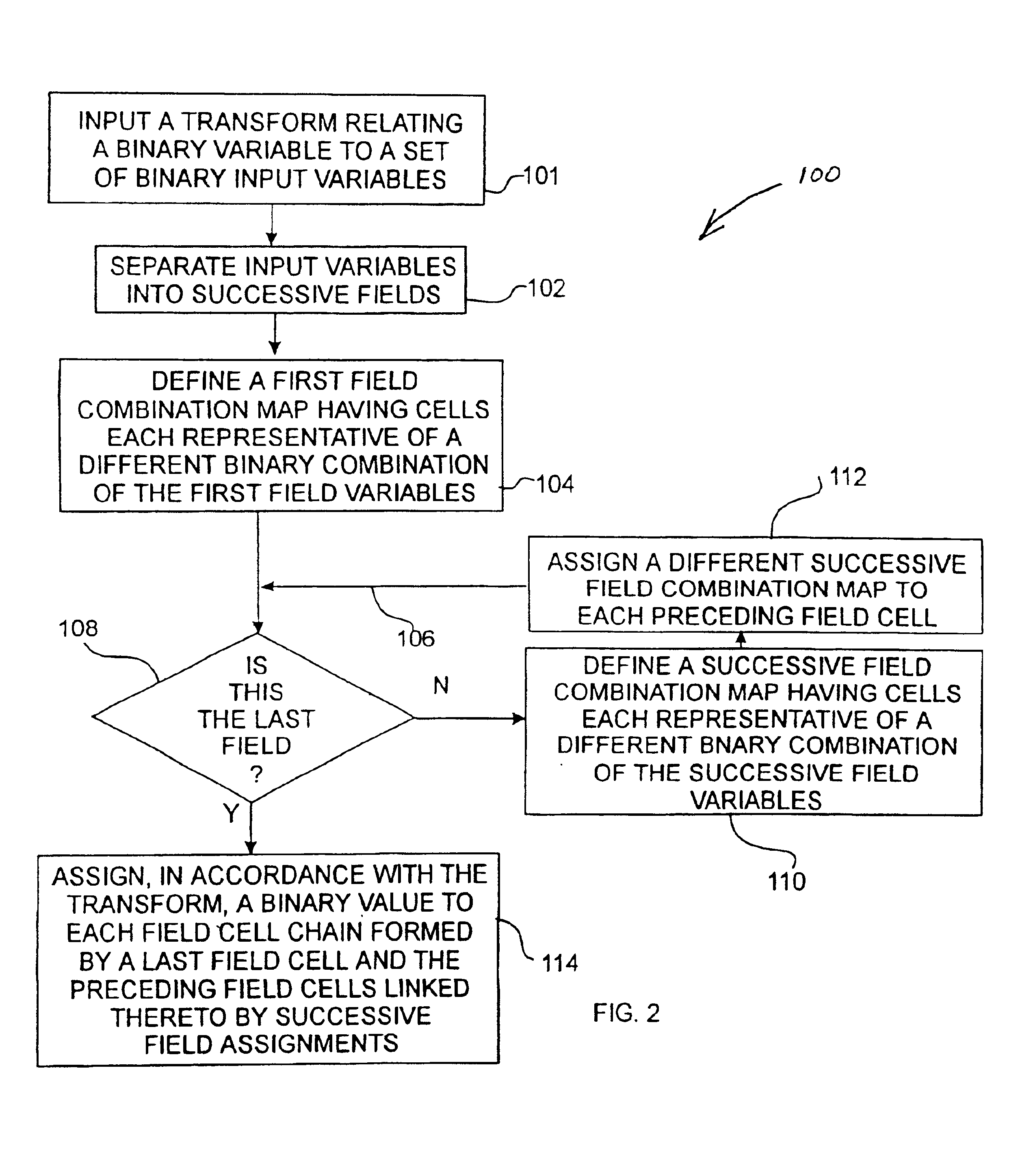System for aiding in the design of combinatorial logic and sequential state machines
- Summary
- Abstract
- Description
- Claims
- Application Information
AI Technical Summary
Benefits of technology
Problems solved by technology
Method used
Image
Examples
Embodiment Construction
[0041]Referring now to the drawings, in which like numerals represent like components or steps throughout the several views, FIG. 1 displays a pictorial illustration of a method, in accordance with a preferred embodiment of the present invention, of representing a transform (also referred to herein as a “function”) 20 which relates a binary output variable, x, to a plurality of binary input variables, a-i. It should be understood that, as used herein, the term “input variables” refers, for example and not limitation, to input signals to a combinational circuit or to present flip-flop states in a sequential state machine. Similarly, it should be understood that, as used herein, the term “output variables” refers respectively, for example and not limitation, to a combinational circuit output signal or a flip-flop next state which may be expressed, or modeled, as a transform of a plurality of such input variables.
[0042]According to the method, the input variables have been separated in...
PUM
 Login to View More
Login to View More Abstract
Description
Claims
Application Information
 Login to View More
Login to View More - R&D
- Intellectual Property
- Life Sciences
- Materials
- Tech Scout
- Unparalleled Data Quality
- Higher Quality Content
- 60% Fewer Hallucinations
Browse by: Latest US Patents, China's latest patents, Technical Efficacy Thesaurus, Application Domain, Technology Topic, Popular Technical Reports.
© 2025 PatSnap. All rights reserved.Legal|Privacy policy|Modern Slavery Act Transparency Statement|Sitemap|About US| Contact US: help@patsnap.com



